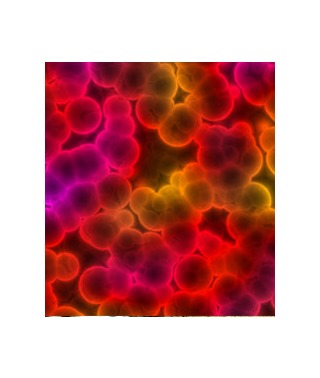Astaxanthin is a powerful antioxidant classified as a carotenoid, which include organic pigments found in a variety of species of plants, algae, animals, bacteria and fungi. At its essence, Astaxanthin serves as one of the most powerful antioxidants that can be absorbed by the human body. It is beneficial in relieving oxidative stress throughout the body, while also aiding in recovery time following exercise. Even with a basic idea of what Astaxanthin is, it's important to understand exactly how Astaxanthin works in the body.
How Does Astaxanthin Work in the Human Body?
The body is reliant on antioxidants to deliver healthful balance, and healing power to damaged cellular structures. Simply defined, antioxidants fight the process of oxidation, which leads to cellular breakdown over time.
Antioxidants sacrifice their structure to repair free radical development, slowing and potentially healing the process of oxidation, thus allowing for stabilized health at the cellular level. Healthy cellular function equates to better overall health, and is a prerequisite for reaching optimal health and peak physical performance.
Astaxanthin is a unique antioxidant, as it is bioavailable throughout the body. The skin, muscles, ligaments, tendons, eyes, cardiovascular system, nervous system, and internal organs are all receptive of Astaxanthin. These soft tissues appreciate, and are able to perform better, due to the presence of the active antioxidant power of Astaxanthin.
How Beneficial Is Astaxanthin for the Human Body?
When compared to other antioxidants, Astaxanthin is quite potent. Common antioxidant vitamins such as vitamin A, C, and E, possess far less antioxidant power than Astaxanthin, when applied to human physiology. The Nutrex Hawaii BioAstin Hawaiian Astaxanthin possesses 550 times the antioxidant power of vitamin E; 6,000 times the power of vitamin C; and 800 times the power of the popular super-antioxidant, Co-enzyme Q10. When adding a supplemental health agent such as Astaxanthin to a daily diet and a routine exercise regimen, the health benefits can be enjoyed throughout the body.
Astaxanthin Health Benefits with No Known Side Effects or Contraindications
Astaxanthin is a naturally occurring carotenoid, and is evident in animals that feed off of, and are prone to, environments high in Astaxanthin production. For example, it is Astaxanthin that gives salmon its brightly colored meat, and also gives shellfish their bright pink or red color when cooked. Flamingos also feed off of marine life with carotenoids, which their bodies then convert to Astaxanthin, giving them their signature pink color. Flamingos are the only animal with this ability to convert other carotenoids into astaxanthin in their bodies.
While there are no known issues of toxicity when supplementing with the GRAS recommended dosage of Astaxanthin, a couple of harmless effects have been noted. Those who have exceeded recommended dosage have reported slight changes in pigment, resulting in a rosy or orange tint. However, Astaxanthin is also noted as an asset to fighting the oxidative stress associated with UV rays.
Learn where Astaxanthin comes from by following the link.
Disclaimer:
The information provided is for educational purposes only and does not constitute medical advice. Always seek the advice of your physician or qualified healthcare provider with any questions or concerns about your health. Check with your doctor before beginning any exercise program. Never disregard or delay seeking medical advice because of something you have heard or read in this article or the internet.

